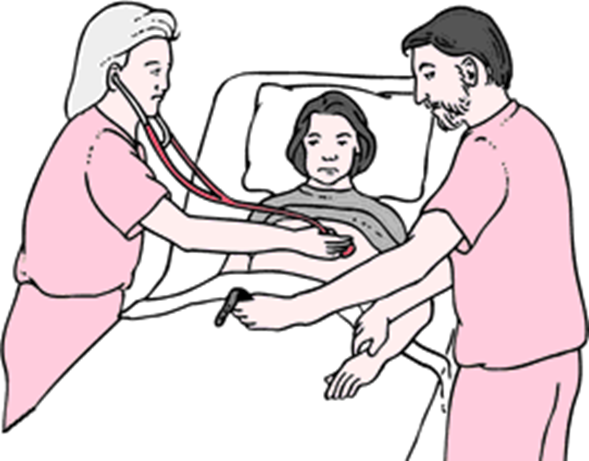A nurse is preparing to administer total parenteral nutrition (TPN) to a client. The nurse should notify the provider of which of the following findings?
Blood glucose 100 mg/dL.
Client's temperature 37.6°C (99.7°F).
Potassium 5.7 mEq/L.
Weight loss of 0.8 kg/day (1.8 lb/day).
The Correct Answer is C
Choice A rationale:
A blood glucose level of 100 mg/dL is within the normal range, so there is no need to notify the provider of this finding.
Choice B rationale:
A client's temperature of 37.6°C (99.7°F) is slightly elevated but not considered a critical finding. It may be indicative of an infection or other mild inflammation, but it does not warrant immediate provider notification.
Choice C rationale:
A potassium level of 5.7 mEq/L is above the normal range (3.5-5.0 mEq/L). Hyperkalemia can lead to serious cardiac complications, such as arrhythmias, and requires immediate attention from the provider.
Choice D rationale:
Weight loss of 0.8 kg/day (1.8 lb/day) should be evaluated and monitored, but it is not an immediate concern that warrants urgent provider notification.
Nursing Test Bank
Naxlex Comprehensive Predictor Exams
Related Questions
Correct Answer is A
Explanation
Choice A rationale:
The combination of widened QRS, frequent premature ventricular contractions (PVCs), and bradycardia (heart rate of 55/min) on telemetry monitoring suggests hyperkalemia. Elevated potassium levels in the blood can cause delayed repolarization of cardiac cells, leading to widened QRS complexes and PVCs. Bradycardia is another common manifestation of hyperkalemia.
Choice B rationale:
Hypocalcemia, characterized by low calcium levels in the blood, can lead to cardiac arrhythmias, but it typically presents with a prolonged QT interval rather than widened QRS complexes and PVCs.
Choice C rationale:
Hyperglycemia, which is high blood glucose levels, does not directly affect the electrocardiogram (ECG) parameters like QRS width or heart rate. It may have systemic effects, but it is not responsible for the ECG changes described in the scenario.
Choice D rationale:
Hypophosphatemia, or low levels of phosphate in the blood, can cause muscle weakness and may have systemic effects, but it is not associated with the specific ECG changes seen in hyperkalemia, such as widened QRS complexes and PVCs.
Correct Answer is B
Explanation
Choice A rationale:
A capillary refill of less than 1 second is a normal finding and indicates adequate peripheral perfusion. It is not a cause for concern in this postoperative client.
Choice B rationale:

The presence of a pulse deficit should be reported to the provider because it suggests a discrepancy between the apical and radial pulses, indicating potential cardiovascular compromise or inadequate arterial perfusion.
Choice C rationale:
A systolic blood pressure 10 points lower than before surgery can be a normal response to anesthesia or surgery and may not necessarily require immediate reporting unless accompanied by other concerning symptoms or vital sign abnormalities.
Choice D rationale:
Pulse oximetry at 96% is within the normal range for oxygen saturation and does not warrant immediate reporting. However, if the client is experiencing respiratory distress or other concerning symptoms, it should be addressed promptly.
Whether you are a student looking to ace your exams or a practicing nurse seeking to enhance your expertise , our nursing education contents will empower you with the confidence and competence to make a difference in the lives of patients and become a respected leader in the healthcare field.
Visit Naxlex, invest in your future and unlock endless possibilities with our unparalleled nursing education contents today
Report Wrong Answer on the Current Question
Do you disagree with the answer? If yes, what is your expected answer? Explain.
Kindly be descriptive with the issue you are facing.
